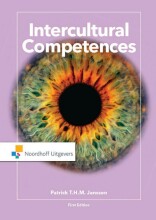Summary: Intercultural Competences | 9781000024791 | Patrick T H M Janssen
- This + 400k other summaries
- A unique study and practice tool
- Never study anything twice again
- Get the grades you hope for
- 100% sure, 100% understanding
Read the summary and the most important questions on Intercultural Competences | 9781000024791 | Patrick T.H.M. Janssen
-
1 PP lesson 1
This is a preview. There are 11 more flashcards available for chapter 1
Show more cards here -
How is culture learned?
We learn culture by socialization and programming -
What is the biggest pitfall in intercultural communication?
The assumption that if you see no problems, there are no problems -
What are the 3 layers of the onion model
Inner layer; basic assumptions
middle layer; norms, values and beliefs
Outside layer; symbols & products and rituals & behavior
Universal -
2 PP lesson 2
This is a preview. There are 7 more flashcards available for chapter 2
Show more cards here -
How can we measure cultural differences?
In order to be able to describe cultures properly in relation to each other, a specific universal characteristic is looked at, which each culture has, but is carried out differently in each culture. -
What are the 6 basic assumptions of the Kluckhohn Model
- Does a culture live in
harmony with nature and the environment or does it wish todominate them? - Is the culture
focused on the past, present or future? - Is it a
task-oriented culture orrelation-oriented culture? Are we a 'do' culture or a 'be' culture - Individual or
collectivist ? - View of the physical space, is it more private or public?
- Human nature; are people bad or good by definition?
- Does a culture live in
-
Does a culture live in harmony with nature and the environment to does it wish to dominate them?
- In
cultures where nature isdominated , the people survive by managing nature - In
cultures which are in harmony with nature, people survive without thoroughly managing and controlling nature. Theyadapt to the given natural situation
Example;
Dominated is like building sturdy houses, resistant to rain, storms and lightning stikes and dikes
Living in harmony with nature; building houses on poles, holes in the road are one if they still work etc. - In
-
Is the culture focused on the past, present or future?
Past;traditions are important,inspiration byhistorical events, past is a part of the identity of every person in that group - Russia
Present; plans are made short term, things from the past are importantbut are notdwelled upon for too long - Belgium
Future: Focus on particular ongoals in the near future or further away - US -
Is culture task or relation oriented? Are we a 'do' or 'be' culture?
Do cultures; performance and performing tasks are important, live to work. People set goals and take action, pleasure in working through the work itself, responsibilities, promotion etc. (US, Northern Europe)
Being cultures; people are relationship oriented, work to live, fun in working by nice colleagues. Relationships ar the most important and are a condition for doing business in that culture. (Africa, Southern Europe, South America) -
Physical Space more private or public?
In North America and Northern Europe, people are much more used to private spaces such as a private bedroom for children.
In Asia and Africa, many families find it terrible to sleep separately. -
3 PP lesson 3
This is a preview. There are 13 more flashcards available for chapter 3
Show more cards here -
What are the 3 levels of mental programming of behavior and thinking?
Bottom; all people showuniversal behavior which is in ourDNA
Middle; A group of people showscultural behavior which is learned andprogrammed
Top; Every individual shows individual behavior which is in ourDNA and Learned
- Higher grades + faster learning
- Never study anything twice
- 100% sure, 100% understanding
































